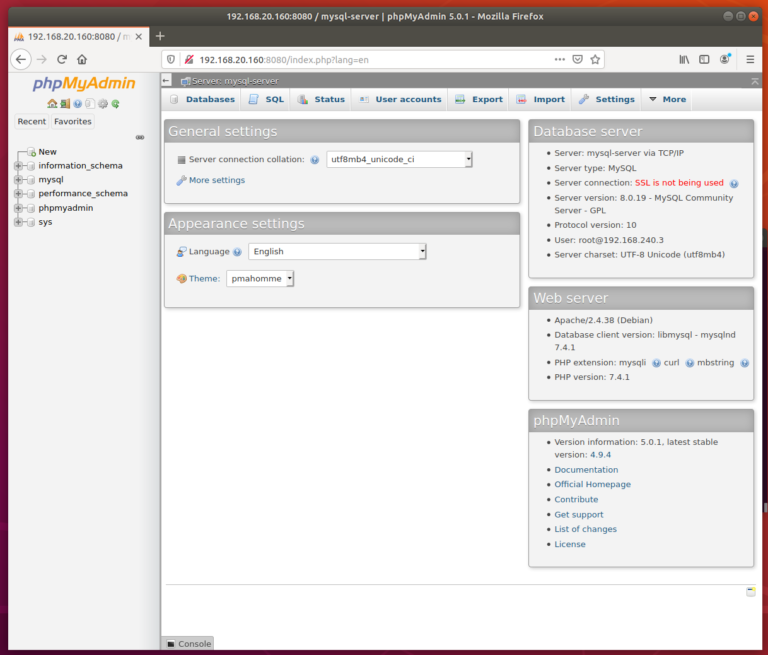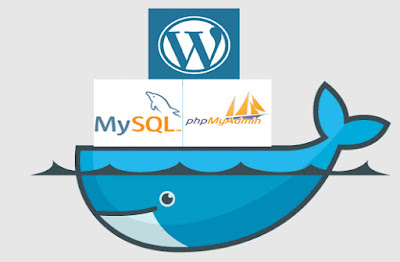
Setting to 0 will only allow you to connect to specified hosts (See Application Setup) Set to 1 to allow you to connect to any server. Specify a timezone to use, see this list. For example, -p 8080:80 would expose port 80 from inside the container to be accessible from the host's IP on port 8080 outside the container. These parameters are separated by a colon and indicate : respectively. docker-compose (recommended, click here for more info)Ĭontainer images are configured using parameters passed at runtime (such as those above). Here are some example snippets to help you get started creating a container. We support all of the official environment variables for configuration as well as directly editing the config files.įor more information check out the phpmyadmin documentation. This image uses nginx, in contrast to the official images which offer fpm-only or Apache variants. The architectures supported by this image are: Architecture Simply pulling lscr.io/linuxserver/phpmyadmin:latest should retrieve the correct image for your arch, but you can also pull specific arch images via tags. More information is available from docker here and our announcement here. We utilise the docker manifest for multi-platform awareness. phpMyAdmin supports a wide range of operations on MySQL and MariaDB.
#Phpmyadmin docker software
Phpmyadmin is a free software tool written in PHP, intended to handle the administration of MySQL over the Web.


The GCP and AWS configuration is hopefully fairly obvious. I put this file in /config, along with my SSL certs, and then it’s a simple docker-compose build docker-compose up to build and run. $cfg = '/etc/phpmyadmin/gcp-client-cert.pem' $cfg = '/etc/phpmyadmin/gcp-client-key.pem' $cfg = '/etc/phpmyadmin/gcp-server-ca.pem' Here’s the configuration options I’ve used for 3 environments: GCP, local Docker images, and AWS.

In my config file, I have my client certificates, and pre-load a bunch of servers to connect to. I’m just adding my own personal config folder to the base image. My Dockerfile is really simple: FROM phpmyadmin/phpmyadmin
#Phpmyadmin docker install
These days I don’t install any web applications (or databases) on my local machine, I use Docker for everything, and Docker Compose in particular, to get repeatable environments.

It’s just a great way to inspect your MariaDB/MySQL databases. I still have a place in my heart for phpMyAdmin, that tool that I was introduced when developing PHP on my shared hosting provider many moons ago.


 0 kommentar(er)
0 kommentar(er)
